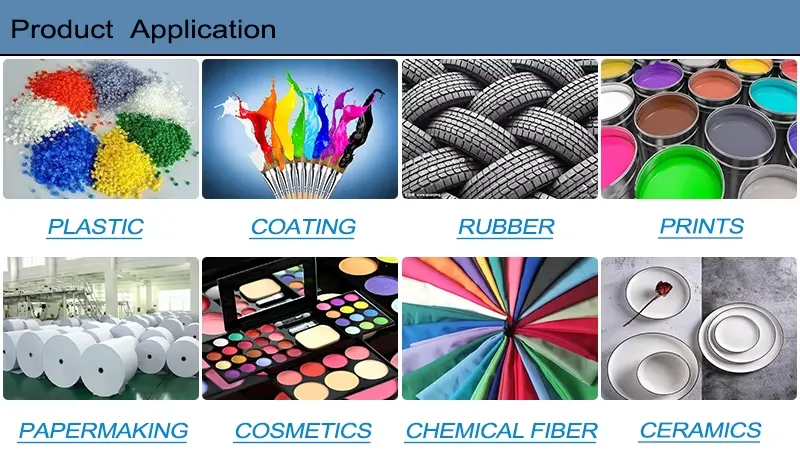
8 月 . 21, 2024 15:25 Back to list
Overview of China's Titanium Dioxide Production and Its Impact on White Paint Industry
Titanium Dioxide White Paint in China A Comprehensive Overview
Titanium dioxide (TiO2) has emerged as a crucial component in the paint and coatings industry, particularly in producing white paint. In China, the manufacturing and application of titanium dioxide white paint have gained significant momentum due to the country's burgeoning industrial and construction sectors. This article explores the importance, production processes, and market dynamics of titanium dioxide white paint in China.
The Importance of Titanium Dioxide
Titanium dioxide is renowned for its superior brightness and high refractive index, making it an excellent pigment for white paint. Its ability to scatter light effectively leads to the production of vibrant and opaque finishes, which are essential for various applications, including construction, automotive, and industrial coatings. The non-toxic and environmentally friendly nature of titanium dioxide further enhances its reputation, aligning with global trends focusing on sustainability and health.
In the Chinese market, where rapid urbanization has fueled extensive construction activity, the demand for high-quality paints and coatings continues to rise. Titanium dioxide white paint is particularly favored for its durability and excellent weather resistance, making it suitable for both interior and exterior applications.
Production Processes in China
China is one of the largest producers of titanium dioxide in the world, utilizing several manufacturing methods to produce this essential pigment. The two primary processes used are the sulfate process and the chloride process.
1. Sulfate Process This traditional method involves the reaction of titanium ores with sulfuric acid. It produces a pigment that often requires additional processing to achieve the desired whiteness and performance characteristics. The sulfate process is known for its lower production costs, but it also generates significant waste byproducts.
china titanium dioxide white paint

2. Chloride Process The chloride process is more modern and environmentally friendly. It involves the chlorination of titanium ores to produce titanium tetrachloride, which is subsequently oxidized to yield titanium dioxide. This method results in higher purity and quality of the pigment, making it increasingly popular among manufacturers aiming for premium-grade products.
China's investment in advanced manufacturing technologies has led to an increase in the production efficiency and quality of titanium dioxide. As a result, Chinese manufacturers can compete on an international scale, supplying to both domestic and global markets.
Market Dynamics and Trends
The titanium dioxide white paint market in China is experiencing significant growth, driven by several factors. Firstly, the increasing demand from the construction sector, propelled by government infrastructure projects and urban development, is a key driver. The automotive industry, with a growing need for high-quality coatings, also contributes to the rising consumption of titanium dioxide.
Moreover, environmental regulations are pushing manufacturers to adopt safe and sustainable practices. This trend aligns well with titanium dioxide's non-toxic nature, making it an attractive option for producers looking to enhance their green credentials.
However, challenges remain, including fluctuating raw material prices and intense competition within the industry. Manufacturers must continually innovate and improve their products to maintain market share in this competitive landscape.
Conclusion
In conclusion, titanium dioxide white paint plays a vital role in China’s thriving paint and coatings industry. Its outstanding properties, combined with advances in manufacturing processes, have positioned it as a leading choice for various applications. As demand continues to grow in sectors like construction and automotive, the importance of titanium dioxide will only increase, shaping the future of painting solutions in China. With an increasing focus on sustainability and quality, titanium dioxide stands out as a cornerstone for innovation and development in the white paint industry.
-
Lithopone for Plastic & TiO2 R-5568/SK-6658 Masterbatch Solutions
NewsMay.30,2025
-
China Leading Rutile TiO2 Manufacturer - R5566 & R996 Grades Available
NewsMay.30,2025
-
High-Purity Anatase & Rutile TiO2 Powder Trusted Manufacturer
NewsMay.30,2025
-
High-Purity Anatase Products Trusted Supplier & Manufacturer
NewsMay.29,2025
-
Best Price Eco-Friendly Rutile TiO2 Supplier & Wholesale Factory
NewsMay.29,2025
-
Chinese Anatase Titanium Dioxide for Ceramic Glaze Reliable Supplier
NewsMay.29,2025
